קהילה
די.פי קאמפ בארי
יוצר הקהילה

Rachel Amram
שלח מסר ליוצר הדף
אודות הקהילה
DP camps – Bari, Italy
General background:
As soon as the battles of World War II in Europe ended, the Jewish survivors started to get organize on different levels including the Escape Movement. Most of the Jewish DPs wanted to leave Europe and were heading towards different coastal towns. In a very short time also the Israeli Brigade troops - led by Mordechai Surkis– started assisting the survivors' organizations. 7000 soldiers of the Jewish Brigade in the British Army and some 30000 volunteers from Israel and from all over the world, helped in organizing the Jewish Displaced Persons in setting in camps all over Europe and their borders-crossing between the different European occupation zones. One of the favorite destinations of the fleeing DPs was Italy. Few Transit Camps were built near the border of Italy like Graz in Austria and Travisio (the largest) in Italy. In these camps the DPs got refugee 24 hours a day and in any time they would arrive. Typically they would stay for 48 hours in the camp, receive medical treatment, clothing, food and rest. Later they would be transferred by tracks and trains to transit and training (Hachsharot) stations while their needs are cared-for all through their long journey in Italy.
Between the years 1945- 1951-about 70,000 Jewish DPs stayed in Italy. Approximately 50,000 of them immigrated to Israel.
The city of Bari – an ancient port in southern Italy
General information
It is important to remember that in September 1943 the British armed forces invaded Italy. On September 8th 1943, the Italian Government signed a peace agreement with the Allies. As a result of this agreement, Germany invaded Italy and concerned the North and central part of the country, where most of Italian Jews were settled. After this invitation, the Jews of Italy were deported to the extermination camps. About 8000 Jews out of the 30,000 Italian Jews were deported, mostly to Auschwitz. Utmost all the deportees did not survive.
Two displaced camps came opened in Bari at 1943 to respond to the needs of refugees from various countries who were seeking shelter and rescue in the British occupation zone in southern Italy, from the German occupied areas: anti-fascists, Gypsies and prisoners of different concentration camps in southern Italy such as those in Menfrdonia, Bari and Tremiti Islands.
The camps for Jewish DPs in Bari:
At the end of 1946 there were approximately 55600 Jews in Italy out of them 26000 were Italian. In the ancient port city of Bari in southern Italy there were two camps and four training (Hachsharot) in villas in the city for Jewish DPs:
Torre Tresca DP camp was opened in October 1943 in a military and concentration camp site in the North part of the city of Bari, after the British occupation of Southern of Italy.
Bari Palese on the North border of the city of Bari which was also opened in late 1943
Since 1945 most in the displaced persons in the Torre Tresca camp were Jews and in the Palese camp all the DPs were Jews. Most of the Jews crossed the Brenner border-pass from Switzerland and other crossing points of the borders of Italy as part of the organized escape movement. This movement was backed up by the survivors themselves and in cooperation with the Jewish Brigade, Jewish soldiers in the different occupation armed forces, Jewish organizations and emissaries from Israel.
In August 1947, 788 Jews and 300 non-Jews DPs stayed in Torre Tresca camp in Bari. The camp was closed in 1949. In August 1947, at the Palese camp stayed 2014 Jewish DPs.
In October 1947was the decision to evacuate the Jews from the Palese camp to other camps in Italy and it is not entirely clear when the camp was evacuated.
The DP camps in Bari were supported by UNRRA, (that in July 1947 their serviced pasted-on to the International Refugees Organization = O.I.R.), American aid organizations — The Joint and HIAS (according to a report from 1946, the monthly expenditure for each refugee was 5781 Italian Liras from UNRRA and 699 from the Joint) and other Jewish organizations such as: pioneer youth movements that were dealing with the refugees' rehabilitation and directing them to Israel; group of partisans and resistance fighters; Members of the Jewish Brigade helped organize Jewish life, establishing a network of education, cultural activities and youth movements; The kibbutz community members and educators helped to set up and organize; Jewish organizations in Italy and more.
Torre Tresca DP camp in Bari was commanded by Major g. Goodeand with the assistance of Miss Jane Pholips, the Welfare officer which both did everything they could to assist the PDs in their camp life with the cooperation of a chosen leadership committee of the refugees.
The Palese Camp Commander was Captain Davidge that was a military tough person and was not the most suitable one to be in charge of a displaced camp of Jews who were all Holocaust survivors. In addition, the Camp Jewish leadership was divided politically. Bothe factors did not assist the DPs in the camp.
The Training (Hachsharot)
General information
The Training Groups (Hachsharot, Zionist collectives) in the DP camps and in the villas received considerable assistance from various organizations. In 1946 the number of Hachsharot in Italy went up from 44 to 79 with about 7000 displaced persons over the age of 18, (of whom 65% were men). In the trainings different activities were conducted such as agricultural teachings, general education classes, learning Hebrew, studying English, health education, Judeo-Zionist history, geography of Israel and more. Portable movie projector was used throughout the different Hachsharot to show movies for the people's amusement. Each newly-wed couple received a present. Children received all their needs to develop in the best possible way – food, clothing, kindergartens, school and medical observation and treatment.
The DPs in the Training groups had medical, cleaning and hygiene services. In addition there were different committees such as supervision to prevent unsafe-building.
In southern Italy were 41 trainings (Hachsharot) with 3770 displaced men and women.
In the camps of Bari DPs organized several training groups: In the Bari Torre Tresca DP camp there were the following training groups (with their Zionist affiliation movements): Negev of Dror Borochov, Hachorshim Bagalil of Young Judaea, Shivat Htznhanim of the Ha'Noar HaTzioni-Akiva, Aviv and Haviva Reich of Hashomer Hatzair, Hana Senesh of the Partizan Organization and Hashavim of Torah and Avoda Hapoel HaMizrachi. In the training camp Palese there were the following training groups (with their Zionist affiliation movements):: Ghetto Rebels of Dror Borochov; Tirat Zvi, Lamakom, Magshimim and Mohaliver of the Torah and Avoda Hapoel HaMizrachi. Bari's 4 training-groups situated in 4 villas: Tree of the training-groups were situated in villas on the Via Salerno (today the street is called Via Amandula) and one training group was situated on King David Street (Via Re David): Dror Bamale on Via Salerno 159, of Dror Borochov, with77 men and women who came to Bari in 1945 and sailed to Israel on 1946. Aba Berdychev on via Salerno 207 of Ha'Noar HaTzioni-Akiva with 75 men and women and two babies. Most of the group members sailed to Israel on 1946, were seized by the British Navy and transported to Cyprus. Few members of the group – the group leader Abraham Mermelstein and his family and other members of the Group, united with Aba Berdychev group in Brivio, situated in the North of Italy near the Lake Garda. The group sailed to Israel on Kadima – a small ship that anchored in a small port near Venice on 5th of November 1947. The boat was seized at sea on 16th of November 1947 with 794 people on board– including more than 100 babies and children under the age of 3. All the DPs were sent to Cyprus without resistance or fight because of the children on board. Eliezer Geller Situated in Via Salerno 213 with 96 men and women of Gordonia Movement. The group sailed to Israel on 1945. Nahalat Binyamin of Poalei Agudat Israel were situated in Via re David with 82 men and women who arrived in Bari on 1945 and left to Israel on 1947.
In the camps of Bari DPs organized several training groups: In the Bari Torre Tresca DP camp there were the following training groups (with their Zionist affiliation movements): Negev of Dror Borochov, Hachorshim Bagalil of Young Judaea, Shivat Htznhanim of the Ha'Noar HaTzioni-Akiva, Aviv and Haviva Reich of Hashomer Hatzair, Hana Senesh of the Partizan Organization and Hashavim of Torah and Avoda Hapoel HaMizrachi. In the training camp Palese there were the following training groups (with their Zionist affiliation movements):: Ghetto Rebels of Dror Borochov; Tirat Zvi, Lamakom, Magshimim and Mohaliver of the Torah and Avoda Hapoel HaMizrachi. Bari's 4 training-groups situated in 4 villas: Tree of the training-groups were situated in villas on the Via Salerno (today the street is called Via Amandula) and one training group was situated on King David Street (Via Re David): Dror Bamale on Via Salerno 159, of Dror Borochov, with77 men and women who came to Bari in 1945 and sailed to Israel on 1946. Aba Berdychev on via Salerno 207 of Ha'Noar HaTzioni-Akiva with 75 men and women and two babies. Most of the group members sailed to Israel on 1946, were seized by the British Navy and transported to Cyprus. Few members of the group – the group leader Abraham Mermelstein and his family and other members of the Group, united with Aba Berdychev group in Brivio, situated in the North of Italy near the Lake Garda. The group sailed to Israel on Kadima – a small ship that anchored in a small port near Venice on 5th of November 1947. The boat was seized at sea on 16th of November 1947 with 794 people on board– including more than 100 babies and children under the age of 3. All the DPs were sent to Cyprus without resistance or fight because of the children on board. Eliezer Geller Situated in Via Salerno 213 with 96 men and women of Gordonia Movement. The group sailed to Israel on 1945. Nahalat Binyamin of Poalei Agudat Israel were situated in Via re David with 82 men and women who arrived in Bari on 1945 and left to Israel on 1947.
קרא עוד





